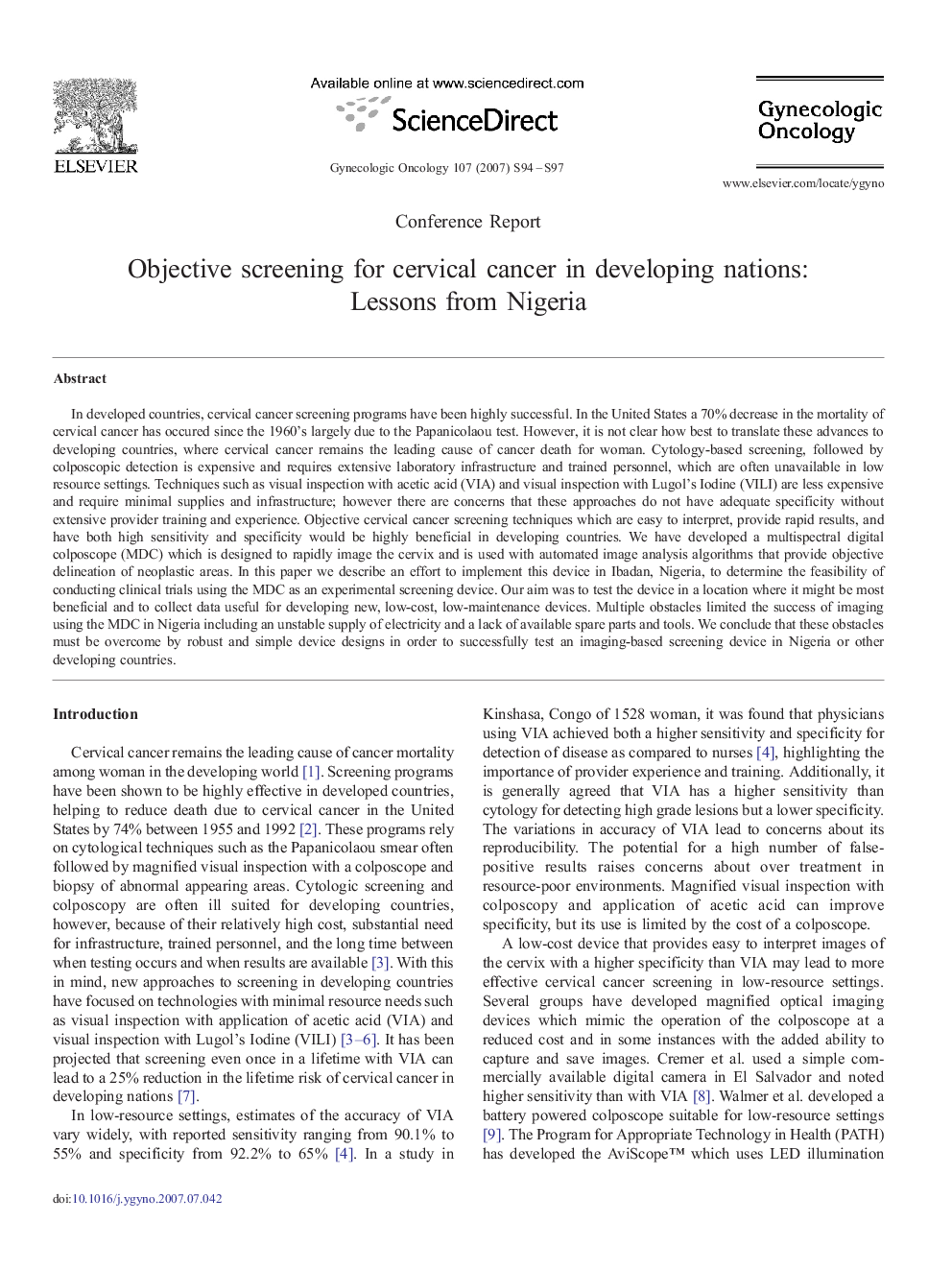| Article ID | Journal | Published Year | Pages | File Type |
|---|---|---|---|---|
| 3946308 | Gynecologic Oncology | 2007 | 4 Pages |
In developed countries, cervical cancer screening programs have been highly successful. In the United States a 70% decrease in the mortality of cervical cancer has occured since the 1960's largely due to the Papanicolaou test. However, it is not clear how best to translate these advances to developing countries, where cervical cancer remains the leading cause of cancer death for woman. Cytology-based screening, followed by colposcopic detection is expensive and requires extensive laboratory infrastructure and trained personnel, which are often unavailable in low resource settings. Techniques such as visual inspection with acetic acid (VIA) and visual inspection with Lugol's Iodine (VILI) are less expensive and require minimal supplies and infrastructure; however there are concerns that these approaches do not have adequate specificity without extensive provider training and experience. Objective cervical cancer screening techniques which are easy to interpret, provide rapid results, and have both high sensitivity and specificity would be highly beneficial in developing countries. We have developed a multispectral digital colposcope (MDC) which is designed to rapidly image the cervix and is used with automated image analysis algorithms that provide objective delineation of neoplastic areas. In this paper we describe an effort to implement this device in Ibadan, Nigeria, to determine the feasibility of conducting clinical trials using the MDC as an experimental screening device. Our aim was to test the device in a location where it might be most beneficial and to collect data useful for developing new, low-cost, low-maintenance devices. Multiple obstacles limited the success of imaging using the MDC in Nigeria including an unstable supply of electricity and a lack of available spare parts and tools. We conclude that these obstacles must be overcome by robust and simple device designs in order to successfully test an imaging-based screening device in Nigeria or other developing countries.
